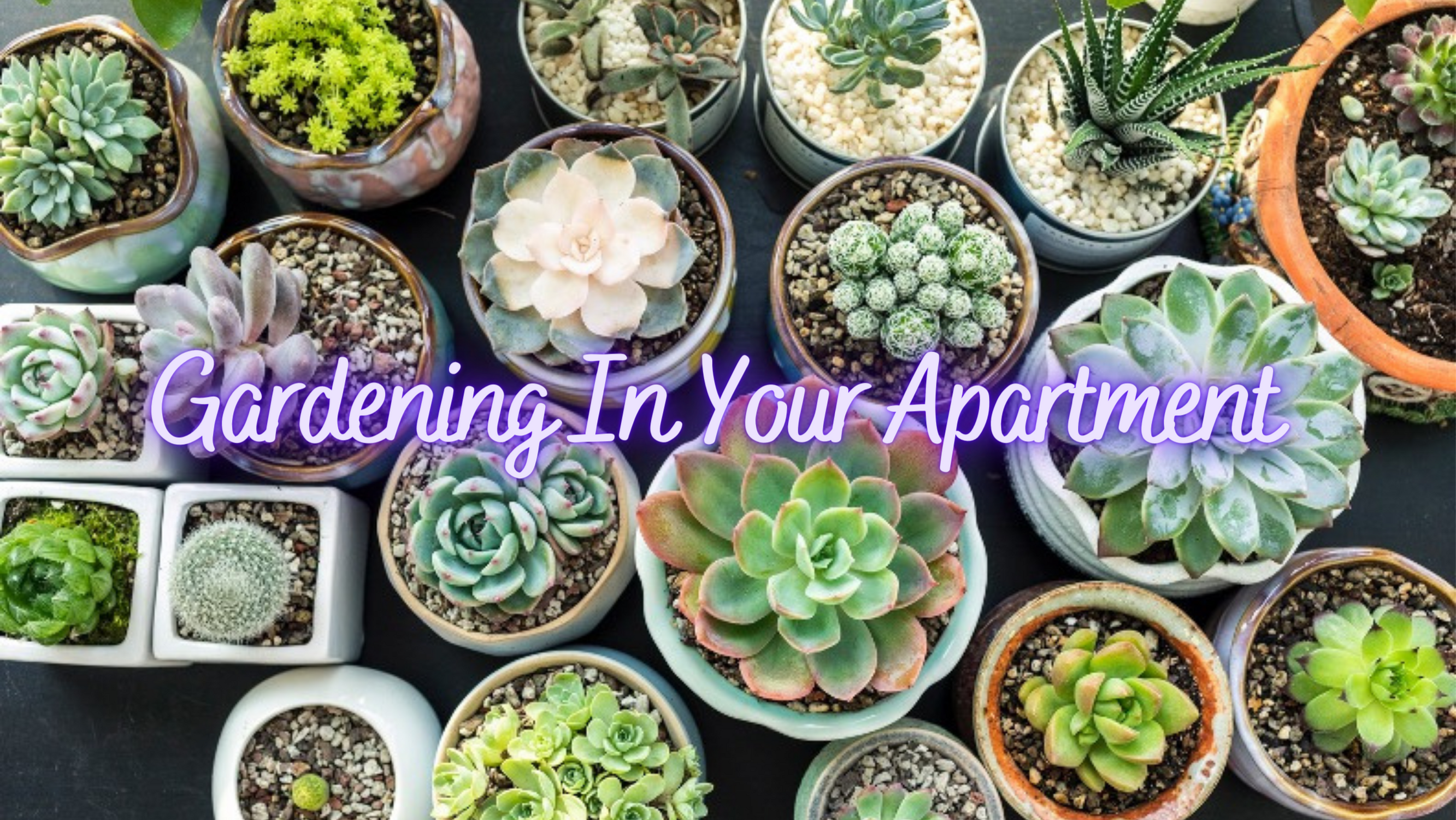Apartment Produce Guide
April 2023
I have always wanted to have plants in my apartment, but I felt limited by the amount of sunlight my apartment got. This semester I have also been in a class about global food systems and the impact they have on the world, so I thought what could be a better way to address both than figuring out what plants we can grow right here in our Madison apartments. Hopefully as you read, you can gain a baseline knowledge of where to start for growing your own food at home. Making a difference in local food systems does not have to mean you change everything about your consumption habits. Start small, because when we all make small changes, they add up!

Before you can plant anything, you need to gather the right supplies. The size of your pot determines how well your plants will grow and how big they can get. If you decide to grow root vegetables, like potatoes or carrots, make sure that you are choosing a deep pot with plenty of root space. When growing leafy greens, you can pick a planter than is much smaller. A colander can be a cheap and readily available starter option that also allows for drainage. You also will need potting soil, not just regular dirt, as potting soil typically has more necessary nutrients added to it. Potted plants are cut off from the ecosystem around them, making it difficult for them to benefit from typical worms, beetles, and other organisms you would find outside. Also, make sure to take into consideration any pets you may have, as many plants are toxic to cats and dogs.

The best produce plants for lower light conditions are cooler season plants. This means choosing plants that are harvested first in the year, including lettuce, spinach, broccoli, and cauliflower. If you are feeling bold, you could even try carrots! Because these vegetables typically grow in the spring season, they require fewer hours of direct sunlight than summer crops. These plants grow best in temperatures below 75 degrees Fahrenheit. Be wary of lots of direct sunlight and warm temperatures, as many cooler season plants can get bitter and do not grow well in outdoor summer conditions.
If you live in an apartment with lots of sunlight or have a patio that gets sun in the summer, try tomatoes instead. They love the sun and as long as you water them, will continue to grow until the end of the year. Tomatoes are an important fruit to eat organic, when possible, because their thin skin allows the pesticides to seep deeper into the plant. Trying to grow your own is a great because you can ensure you know what is going into the plant and that it truly is organic.

Don’t forget to water your plants! The soil should be moist, but not soaked in water. Drainage is your friend, so be sure to use pots and containers with holes to ensure that you do not drown your plants. Potted plants also dry out faster than an outdoor garden, so try to water your plants regularly. Also, put a plate or something similar under your indoor pots so the excess water does not drain onto your floor.
Plants need many different nutrients to create the most bountiful harvest, which is why fertilizers are so commonly used. However, there are ways to naturally give these nutrients to plants without buying fertilizer or extra supplies. One of the easiest ways to try to put nutrients into the soil is to create your own compost, however compost machines can be expensive. Some plants, like green beans, can fix nitrogen, a necessary plant nutrient, into the soil. This is great for plants like tomatoes that need sun, as green beans need direct sun, but is not at feasible for indoors. Alternatively, try adding dried coffee grounds, ground up eggshells, or very diluted green tea to add nutrients to the soil. Be careful not to add to much, as this can change the acidity of the soil and negatively impact plant growth.

Having a healthy relationship with food and where it comes from is important. Most of the produce in the store is shipped from hundreds, if not thousands, of miles away and is produced on farms that rely heavily on chemicals. This means that food must be picked before it is ripe and the shipping releases unnecessary greenhouse gases. The pesticides, herbicides and fertilizers used on plants at industrial farms can also be extremely detrimental to human health, especially on vegetables and fruits that we eat the skin of or have thin skin. They also often kill the natural species of the area, contributing to the spread of fast-growing populations of plants and insects. To keep both our bodies and planet health, we need to think critically about our food. Growing our own food, even if it is only one item, helps us understand what goes into the food we eat while also directly putting organic produce in the home. While not everyone has the luxury of completely growing their own food or buying all local, organic produce, it is important to be conscious of where our food comes from and what goes into it.
Article written by Annika Zuverink
